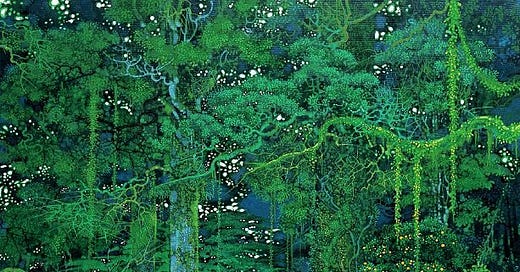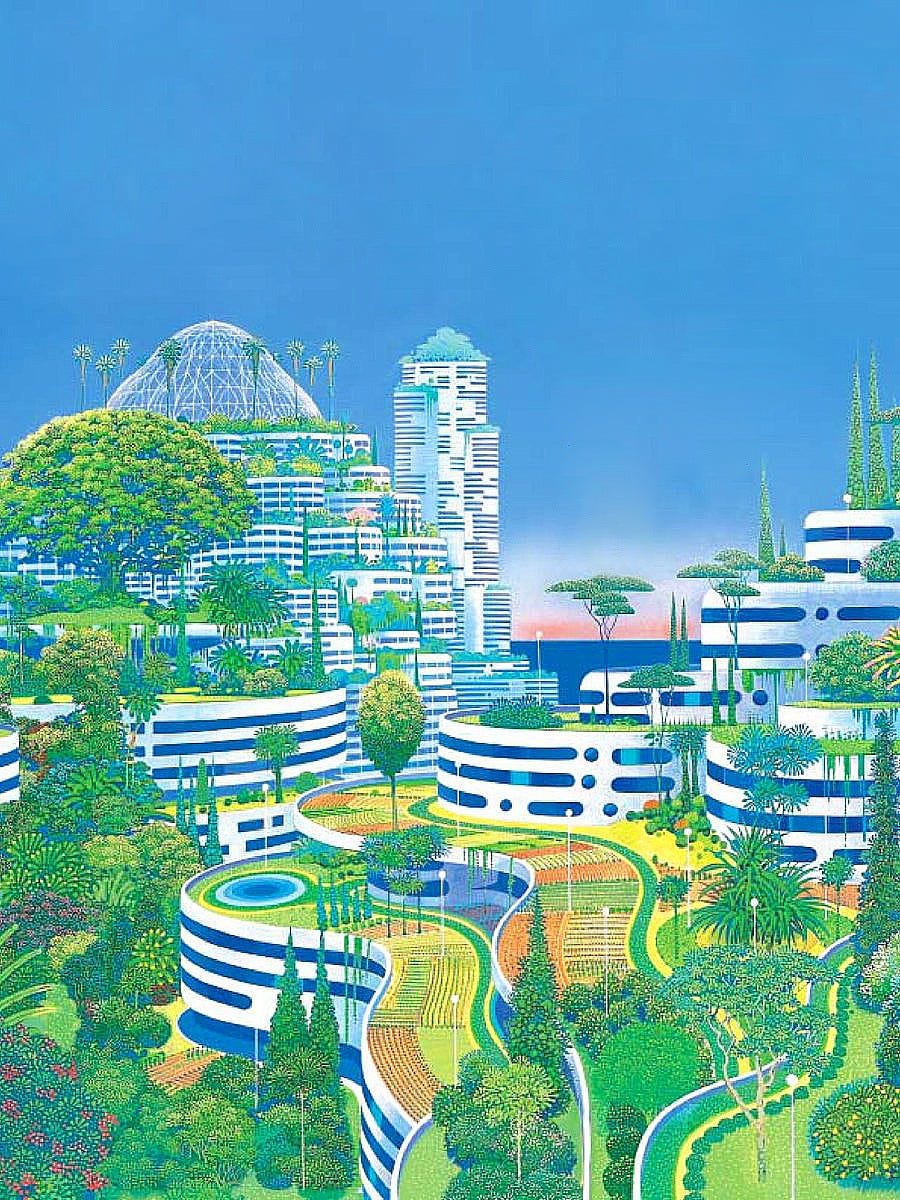I Changed the Wallpaper on my Cellphone, and Doing So Changed My Life
An appreciation for the artwork of Hiro Isono
Deep in the forest, as the land settles into an evening silence, the elephant is roaming from its tribe. It has come to ponder, to take a little risk, to revel in being small and insignificant.
To revel in the individual pulse of every vine and petal and leaf being blown by the wind.
Those lucky humans who come in contact with it halt their safari to watch. And they return to the city unable to remember anything else. Conversation with strangers comes easier. Scents are brighter and more uplifting. Tea tastes better. There’s an urge to tell lavish stories to everyone nearby. Everything one can imagine about the future is just a little bit more okay.
The dullness of this image, making no statement at all, being as inoffensive and uncontroversial as a corporation likes to be—this is what I used to see when I opened my phone screen some two hundred times per day.
Modern life has gotten so hectic, and new phones so common, that we’ve begun to neglect personalizing our gadgets. But doing so may be the most important decision we can make for our daily mental health.
When I swipe past the locked screen wallpaper, I’m welcomed into this cityscape. Nature and modernity intertwine to the soul’s content. Everywhere, the people are encouraged to slow down, pick some food from the nearby farmland, wade into the pond, or pick some fruit from the abundant trees.
Up high in the glass dome, one is encouraged to take twenty minutes to reflect on the bustle of modern life. If they don’t have time, they’re encouraged to take an hour.
Out on the horizon, there’s a glimmer to notice: the morning sun about to break.






